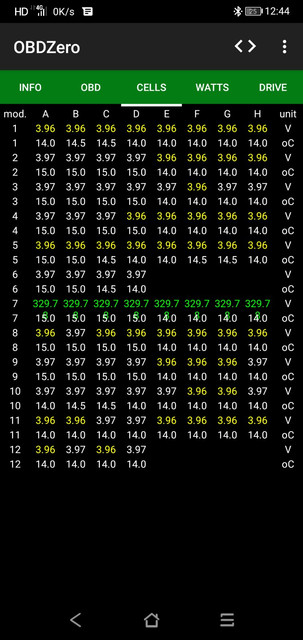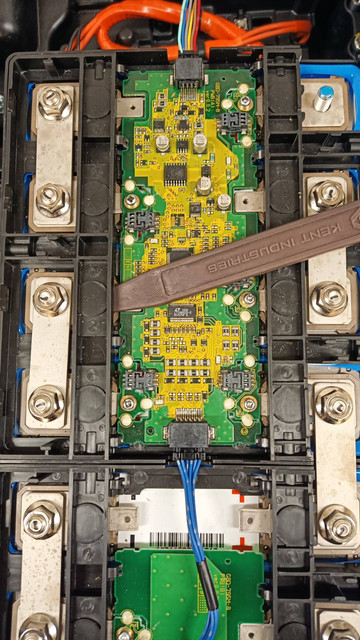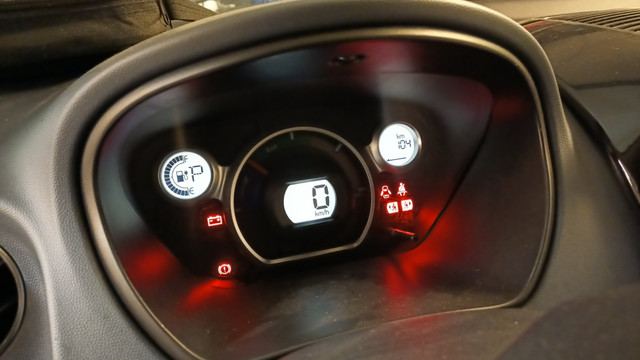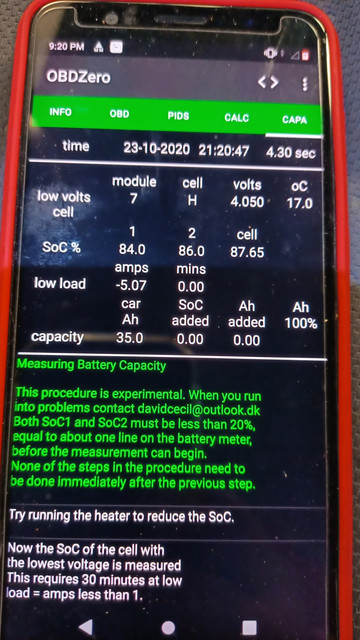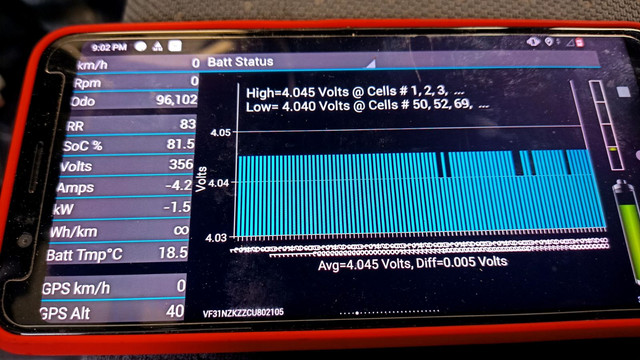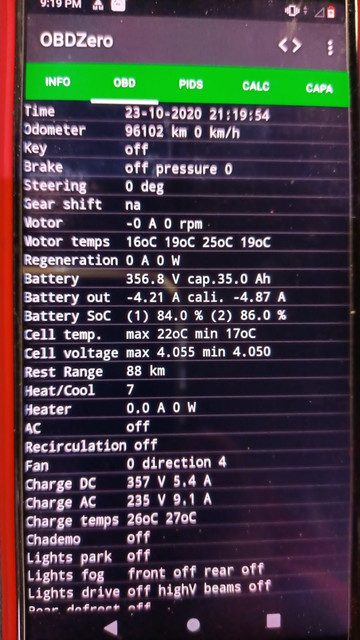Hi.
Will tell story from the beginning.
I bought this car with ``not charging`` problem. Fast charging was working, bet when you connect it to 10A charger, charger indicator turns on, fan starts, even cooling pump activates, but after few seconds everything stops and charge indicator on charging cable goes off. The yellow light in dash indicates fault. By the way, the car was running I took it home without any problem.
Since I do not have good diagnostic equipment , i use iCarsoft. Ther is no iOn or C-Zero so I use Mitsubishi iMiev as car definition. The following failures came :
Cell Voltage sensor BMU ( P1A33)
Remote CAN T/O/ Not equip ( U1113)
Charger state signal error BMU (P1A39)
As well i use OBDLink MX and app OBD Zero to see whats going on cells itself.
Row nr 7 in batt pack showed 329 V. Thats why i took down battery for closer check. What i found out that if you press gently with finger on processor in PCB for CMU ( this one which is located direct on battery) and you will disconnect and connect CMU again ( still with finger on processor or somewhere near by) the row nr 7 starts to answer and good values appear on screen. faults P1A33 and P1A39 disappears...
Fail U1113 is always active, but i believe, its caused that i use iMiev diagnostic soft for Peugeot. Might be i am not right.
I managed to get few CMU PCB, but they are in terrible condition - from flooded car...
I found one CMU with minimal water damage, cleaned it and replaced. Unfortunately it was with address for nr 3. So when two CMU boards with the same address was connected OBDLink showed failure for nr3. To check this CMU functionality I disconnected pack nr 3 . I was happy surprised that flooded CMU with nr3 was working like it shoud. CMU was replying and good values was showed on OBDLink MX. I put finger on temperature sensors, and they reacted: values changed on OBDZero app.
Thats why I decided to swap eprom from fault CMU with nr 7 to flooded with adress 3.
Now came the unexpended failure. After changing address CMU was recognized, but look like system freezes: all values for all batteries became the same. Its in attached picture .No green cells with highest voltage... I tried connect\disconnect this CMU for several times. It does not helpt. I cheked the car condition with OBD. More failures came to diagnostic( 6 or 7like temperature sensor, low voltage, mismatch and other) .
Then i took eprom back to defected CMU PCB. Result now is the same as before swap . With finger on ( actually i have a small plastic spade on side of PCM to make it banded little bit ) the failures gone ( except U1113 MiEV can T/o/ not equip).
All checks was done only with ignition on. I can`t turn ignition key to ready position, because the power cables is not attached to motor controller, as well pack nr 7 is not connected to the rest of the system.
Picture of freezed system with changed eprom should be there :
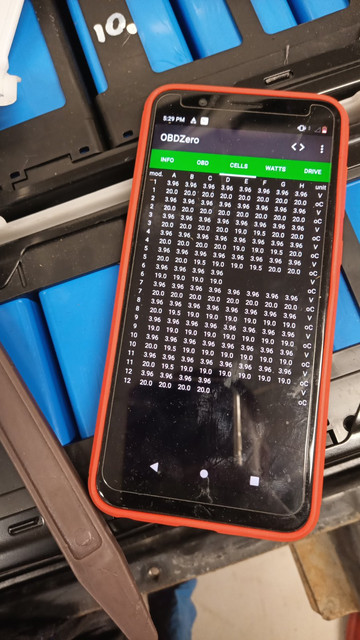
With banded PCB ( finger on processor) :
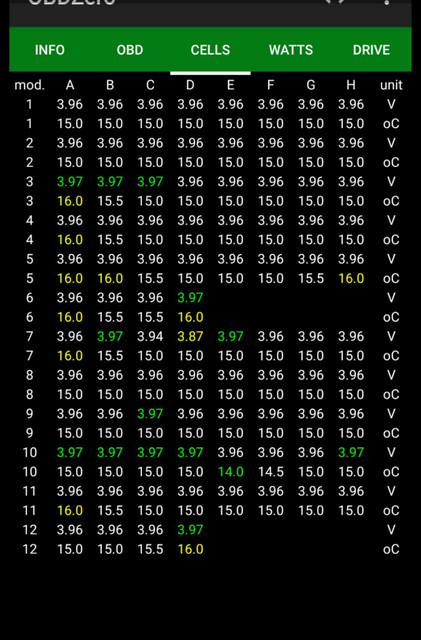
Failure on PCB :
